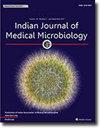The enigmatic voyage of pneumococcal carriage: Unraveling the risk factors in pediatric populations -- A scoping review
IF 1.3
4区 医学
Q4 IMMUNOLOGY
引用次数: 0
Abstract
Background
Pneumococcal infections are a major cause of morbidity and mortality globally, especially among children in low- and middle-income countries (LMICs). Although considerable research has been done on the frequency of pneumococcal infections and their risk factors, there are still many unanswered questions. The objective of this study is to offer fresh perspectives through systematic literature review on the shifting prevalence of and associated risk factors for pneumococcal colonization.
Methods
A systematic search of literature from January 2012 to December 2023 was conducted using PubMed and Scopus, with keywords related to Streptococcus pneumoniae colonization and risk factors, and references were manually screened.
Results
Studies from 41 different countries are included in the evaluation, which focuses on pediatrics patients who are most vulnerable to pneumococcal infections. The most frequent risk variables for pneumococcal colonization were having siblings, daycare centers, passive smoking, household characteristics, age, comorbidities, and vaccination status. The frequency of pneumococcal colonization was greatest among LMICs, which may be related to inadequate pneumococcal vaccination programs, densely populated areas, and a lack of knowledge about basic sanitation and hygiene.
Conclusion
The study emphasizes how crucial it is to monitor serotype prevalence to direct vaccination campaigns in these regions. For creating efficient pneumococcal disease prevention and control strategies, it is essential to understand the risk factors connected to pneumococcal colonization. The review highlights the value of vaccination campaigns in lowering the prevalence of pneumococcal illness, to completely understand the relationship between immunization, serotype colonization, and the risk of pneumococcal colonization, more study is required especially in LIC and LMIC region.
肺炎球菌携带的神秘旅程:揭示儿科人群的危险因素——一项范围审查。
背景:肺炎球菌感染是全球发病和死亡的主要原因,特别是在低收入和中等收入国家(LMICs)的儿童中。尽管对肺炎球菌感染的频率及其危险因素进行了大量研究,但仍有许多未解之谜。本研究的目的是通过系统的文献综述,为肺炎球菌定植的流行变化和相关危险因素提供新的视角。方法:系统检索2012年1月至2023年12月的PubMed和Scopus文献,关键词为肺炎链球菌定植及危险因素,人工筛选文献。结果:来自41个不同国家的研究被纳入评估,该评估侧重于最容易受到肺炎球菌感染的儿科患者。肺炎球菌定植最常见的风险变量是有无兄弟姐妹、日托中心、被动吸烟、家庭特征、年龄、合并症和疫苗接种状况。肺炎球菌定植的频率在中低收入国家中最高,这可能与肺炎球菌疫苗接种计划不足、人口稠密地区以及缺乏基本卫生和个人卫生知识有关。结论:该研究强调了监测血清型流行对指导这些地区的疫苗接种运动的重要性。为了制定有效的肺炎球菌疾病预防和控制策略,了解与肺炎球菌定植相关的危险因素是至关重要的。该综述强调了疫苗接种运动在降低肺炎球菌疾病患病率方面的价值,为了完全了解免疫接种、血清型定植和肺炎球菌定植风险之间的关系,需要进行更多的研究,特别是在低收入国家和低收入国家地区。
本文章由计算机程序翻译,如有差异,请以英文原文为准。
求助全文
约1分钟内获得全文
求助全文
来源期刊

Indian Journal of Medical Microbiology
IMMUNOLOGY-
CiteScore
2.20
自引率
0.00%
发文量
154
审稿时长
73 days
期刊介绍:
Manuscripts of high standard in the form of original research, multicentric studies, meta analysis, are accepted. Current reports can be submitted as brief communications. Case reports must include review of current literature, clinical details, outcome and follow up. Letters to the editor must be a comment on or pertain to a manuscript already published in the IJMM or in relation to preliminary communication of a larger study.
Review articles, Special Articles or Guest Editorials are accepted on invitation.
 求助内容:
求助内容: 应助结果提醒方式:
应助结果提醒方式:


